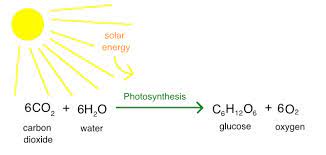enviro 2.1-2.2
0.0(0)
Card Sorting
1/15
There's no tags or description
Looks like no tags are added yet.
Study Analytics
Name | Mastery | Learn | Test | Matching | Spaced |
|---|
No study sessions yet.
16 Terms
1
New cards
species
A group of organisms that share common characteristics and can interbreed to produce fertile offspring.
2
New cards
population
The total number of individuals inhabiting a particular area, usually measured by a census or estimate.
3
New cards
habitat
The natural environment where a particular plant or animal species lives and thrives. It provides food, shelter, water, and other resources necessary for survival.
4
New cards
abiotic vs. biotic with examples
Abiotic refers to non-living factors in an ecosystem, such as temperature and soil. Biotic refers to living factors, such as plants and animals. Examples of abiotic factors include sunlight, water, and air. Examples of biotic factors include trees, birds, and insects.
5
New cards
niche vs. fundamental vs. realized
Type of ecological niche that an organism occupies is called its niche. Fundamental niche is the full range of environmental conditions in which an organism can survive. Realized niche is the actual range of environmental conditions that an organism occupies due to competition and other biotic factors.
6
New cards
carrying capacity
The maximum number of individuals an ecosystem can support without causing significant harm to the environment or depleting resources.
7
New cards
competition (intraspecifc vs. interspecific)
Competition refers to the interaction between individuals or species that compete for the same resources. Intraspecific competition occurs between individuals of the same species, while interspecific competition occurs between individuals of different species.
8
New cards
predation
Predation is the act of one organism, the predator, hunting and killing another organism, the prey, for food.
9
New cards
herbivory
The consumption of plants by animals, including grazing, browsing, and leaf litter consumption.
10
New cards
parasitism
\
\
A type of symbiotic relationship where one organism benefits at the expense of another. The parasite lives on or inside the host organism, feeding off its resources and potentially causing harm or disease. Examples include ticks, fleas, and tapeworms.
11
New cards
mutualis
\
\
A type of symbiotic relationship where both species benefit from each other's presence. It is a win-win situation where both organisms rely on each other for survival and reproduction. Example: Bees and flowers.
12
New cards
s vs. j population curve
The "S" curve and "J" curve are two types of population growth curves. The "S" curve represents logistic growth, where a population grows rapidly at first, but then levels off as it reaches the carrying capacity of its environment. The "J" curve represents exponential growth, where a population grows at an increasingly rapid rate without any limiting factors. Here is an example of what the two curves might look like:
13
New cards
community
A group of individuals sharing a common space and resources, who interact with each other and the environment. They have social, cultural, and economic ties, and can influence the health and well-being of the ecosystem.
14
New cards
ecosystem
A community of living organisms in conjunction with the nonliving components of their environment, interact as a system. It includes both biotic and abiotic factors.
15
New cards

respiration (inputs, outputs, and energy transfers)
Inputs: Oxygen and glucose
Outputs: Carbon dioxide, water, and ATP
Energy transfers: Chemical energy in glucose is converted to ATP through cellular respiration.
Outputs: Carbon dioxide, water, and ATP
Energy transfers: Chemical energy in glucose is converted to ATP through cellular respiration.
16
New cards

photosynthesis(inputs, outputs, and energy transfers)
Inputs: carbon dioxide, water, and sunlight.
Outputs: glucose and oxygen. Energy transfers: light energy is converted into chemical energy during the light-dependent reactions, which is then used to create glucose during the light-independent reactions.
Outputs: glucose and oxygen. Energy transfers: light energy is converted into chemical energy during the light-dependent reactions, which is then used to create glucose during the light-independent reactions.